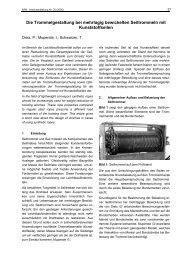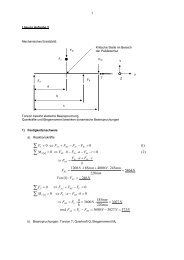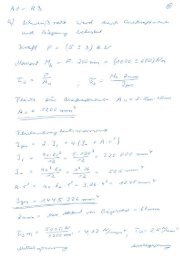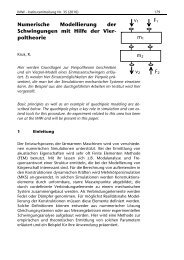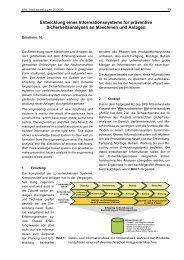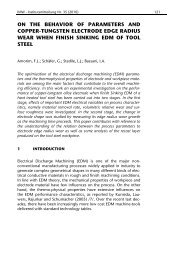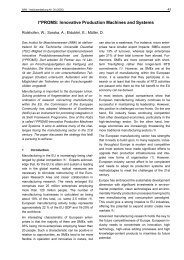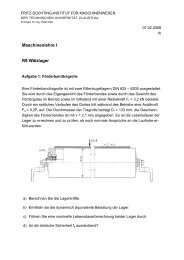Multibody Contact Simula- tion of Constant Velocity Plunging Joint
Multibody Contact Simula- tion of Constant Velocity Plunging Joint
Multibody Contact Simula- tion of Constant Velocity Plunging Joint
Create successful ePaper yourself
Turn your PDF publications into a flip-book with our unique Google optimized e-Paper software.
96 IMW - Institutsmitteilung Nr. 35 (2010)<br />
Figure1: <strong>Constant</strong> velocity drive shaft (after /1/)<br />
The fric<strong>tion</strong> between balls and races leads to high plunging forces<br />
with increasing articula<strong>tion</strong> <strong>of</strong> the joint. Therefore, deteriorate NVH<br />
performance <strong>of</strong> torque transmission /3/. Because <strong>of</strong> fric<strong>tion</strong>, the oscillating<br />
movement <strong>of</strong> the ball is not true rolling but consists <strong>of</strong> rolling,<br />
boring and sliding. Boring and sliding aggravate ball-track fric<strong>tion</strong><br />
and then accelerate the process <strong>of</strong> fatigue. Carsten Bauer investigated<br />
the fatigue, internal fric<strong>tion</strong> and stress <strong>of</strong> CV plunging joint via analysis<br />
as well as experiments, he paid much atten<strong>tion</strong> to deal with the influence<br />
<strong>of</strong> induc<strong>tion</strong> annealing to the internal stress and nondestructive<br />
test <strong>of</strong> the fatigue quantitatively /4/. So, understanding<br />
the dynamic contact <strong>of</strong> ball-races and movement <strong>of</strong> balls will help us<br />
find ways to decrease boring and sliding, therefore, improve the fatigue<br />
life, NVH performance/5/. This paper will apply polygon contact<br />
model (PCM) to simulate the multi-body contact dynamics <strong>of</strong> CV<br />
plunging joint with SIMPACK s<strong>of</strong>tware package, and investigate the<br />
movement <strong>of</strong> the balls under running state.<br />
2 <strong>Multibody</strong> contact model <strong>of</strong> the CV plunging joint<br />
All components <strong>of</strong> CV plunging joint are assembled by mechanical<br />
contacts, leads to a multibody contact system /6/. <strong>Contact</strong>s between<br />
all the components <strong>of</strong> CV plunging joint are shown in Fig. 2. In the<br />
entire joint, there are 24 helical surface-to-sphere contacts (ball-race<br />
contact), 12 sphere-to-plane contacts (ball-cage window contact), 12<br />
sphere-to-cylindrical contacts (ball-cage window contact), and 1



